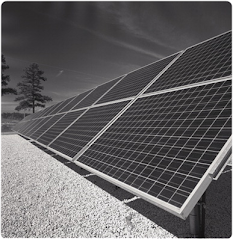

Wind Chimes and Solar Healing

First of all I'm not sure if this is a great coupling for a post. It was kinda hasty titling. Most consider wind chimes pleasant and harmless.
Awesome Vids:
http://www.youtube.com/watch?v=Q4cVLAbRVDc
http://www.youtube.com/watch?v=Pw9Hzv17OPs
Unlike wind chimes, some of my research into the role of 'Solar in the Healing Arts' has turned up a few kinda creepy things.
The rather cultish Sun Gazers are one far out trip man...but to each their own.
http://en.wikipedia.org/wiki/Sungazing

And...a search on 'Solar Therapy' turns the following medicalish definition:
Treatment of disease by exposure to sunlight.
However I did also turn up some really good stuff on 'Solar and Healing'.
Kick it off with some inspirational words of wisdom from another far out site... insightful albeit in a rather feel good fashion (sans human sacrifice stuff)
'The Sun has been a symbol of spirituality and nourishment since the beginning of history. The ancient Egyptians worshipped the Sun-god Ra. Certain hymns of the Indian Sanskrit Rig-Veda refer to the Vedic Sun-god Surya. In Peru, great sun discs were once made out of gold (the color associated with the Sun) in honor of the God of Inca. Stonehenge and ancient Mayan temples focused on the motion of sunlight as a source of great significance. Solstice and equinox rituals are part of every traditional culture.'
If this sounds like your path...
www.goldsunhealing.com

Here is some wikipedia on some key figures in the history of Sun, Ritual and Religion
http://en.wikipedia.org/wiki/Ra
http://en.wikipedia.org/wiki/Aztec
Sun Gods - Wind Gods is likely it's own post.
Moving On to Western Medicine.

We do also receive direct physical nourishment in the form of Vitamin D from the sun. Borrowed quote from nutrition.about.com
'Your body makes vitamin D when you are exposed to the ultraviolet B (UVB) rays in sunlight.
The amount of exposure depends on the time of the year. In the northern hemisphere, the UVB is more intense during the summer months and less intense during the winter months. In fact, if you live north of the 42-degrees latitude, you will have a difficult time getting enough vitamin D from the sun from November through February. If you live north of a line drawn on a map from the northern border of California to Boston, Massachusetts, you will probably need additional vitamin D from the foods you eat during the winter.
Vitamin D is necessary for absorption and utilization of calcium, so you need adequate amounts of vitamin D for healthy bones.Research studies also suggest that getting enough vitamin D may help to prevent high blood pressure, multiple sclerosis and some forms of cancer.'
That is all good western medicine stuff.
But again, moving on.

What about the general feeling of well being many report after some nice time in the sun.? I'm not talking Mad Max, The Good, The Bad and The Ugly sun, but just a few hours at the beach. Makes you feel good.

Here is a nice case for practicing yoga outdoors:
http://www.wailana.com/lifestyle/weeklymessage/message.php?id=21

In fact there were some more good ideas put forth from this yoga resource in general:
http://suryayoga.indianetzone.com/
From their site:
'Sunlight is every bit as central to our health and well-being as proper nutrition, clean water, and exercise. Advntages of Sunlight are:
So... here is my synopsis
Wind Chimes are Great
Sun Exposure can kill you
Some Weirdos Sun Gaze
The Sun is epic in Ritual and Religion
Vitamin D Comes From The Sun
It's Nice to Go to the Beach
and it can be cool to do Yoga in the sun.
That's what I got.
As if this topic could not get more rambly, let's move off topic completely to this
http://www.youtube.com/watch?v=Pw9Hzv17OPs
Crystal Bowl Meditation

Ok, next post will be something more sensible or at least less metaphysical.
The Role of the Sun in the Water Cycle as topic.









































.axd.png)
